Markets in Bangkok are a riot of colors, sights, and sounds. While it’s true that you’ll find tourist trinkets in many of them, there’s plenty for locals and serious shoppers as well.
Morning and night markets in particular have long been a focal point of social and cultural life in Thailand. In winding alleyways crammed with vendors, you’ll find everything from gorgeous Thai silks and crafts to vintage clothes and music by Thai indie bands.
A note about market etiquette: although a certain amount of good-natured bargaining is acceptable at places like Chatuchak Weekend Market, aggressive haggling is considered rude, particularly from international travelers. Politeness and a smile are likely to land you a better deal, regardless.
Here are some of the best markets to visit in Bangkok.
Chatuchak Weekend Market
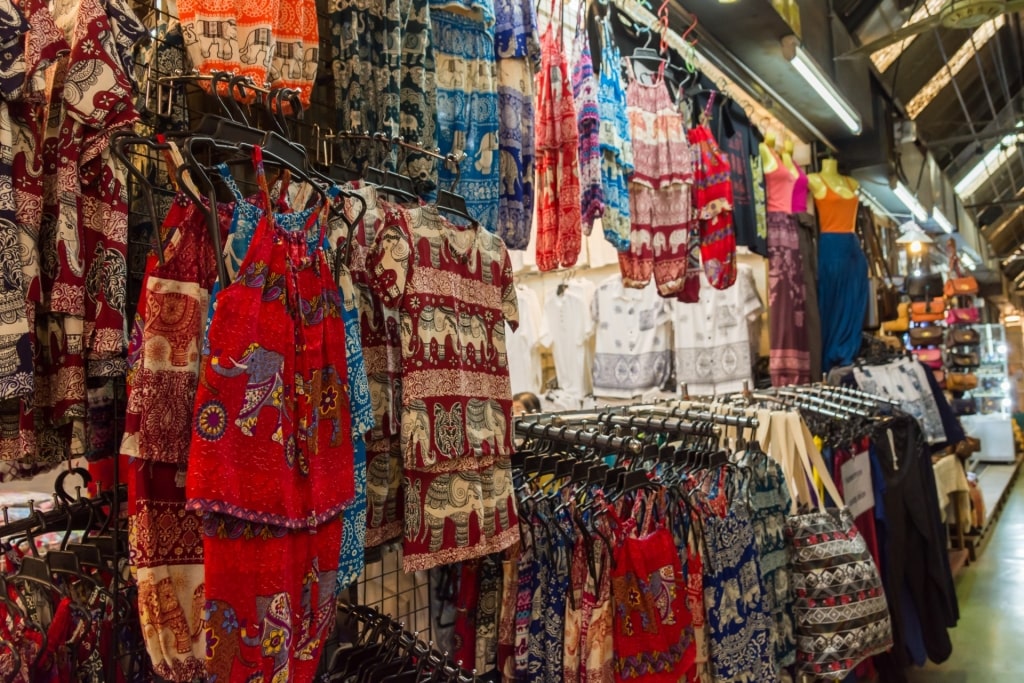
Chatuchak Weekend Market
With more than 10,000 stands covering an area the size of a small town, Bangkok’s biggest and most famous market by far can be overwhelming. It’s also a treasure trove—if you know where to look.
Although there are plenty of stands selling Thai souvenirs, there are some real gems to be found, not least rare vinyl records, genuine antiques, and exceptional handicrafts.
Chatuchak, sometimes referred to by locals simply as “JJ,” is where Thailand’s up-and-coming fashion and jewelry designers go to get their start. Many of those who later go on to make it big will still wax nostalgically about their early days here.
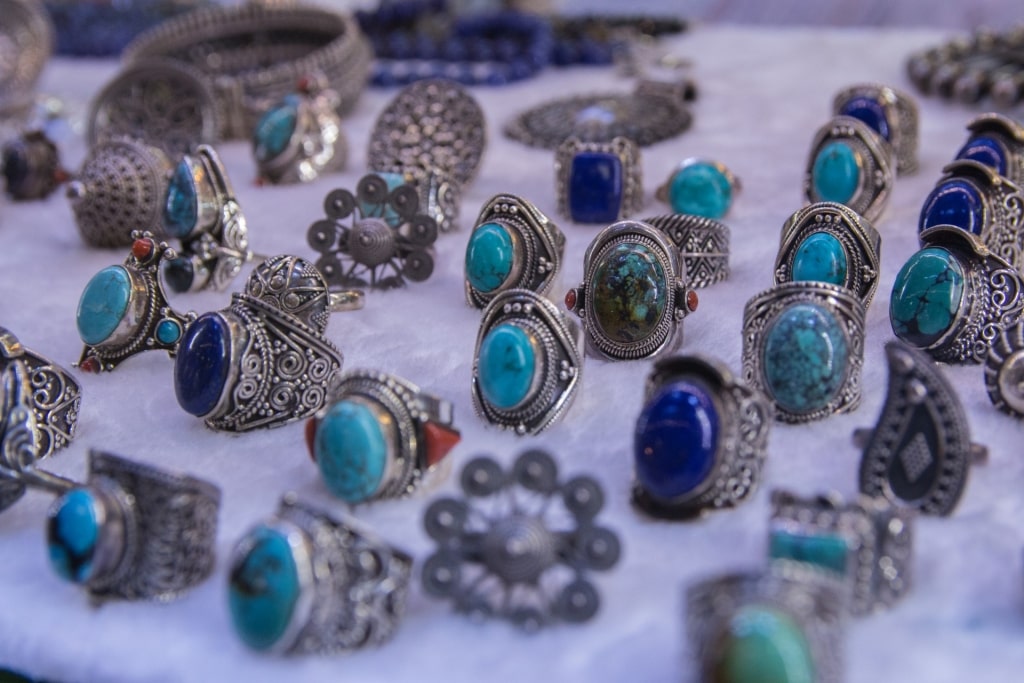
Silver jewelry
While the quality of silver jewelry varies, there are some real finds here, including one-of-a-kind pieces made by expert metalsmiths. Look for traditional designs inspired by the hill tribes of Northern Thailand, as well as more contemporary pieces.
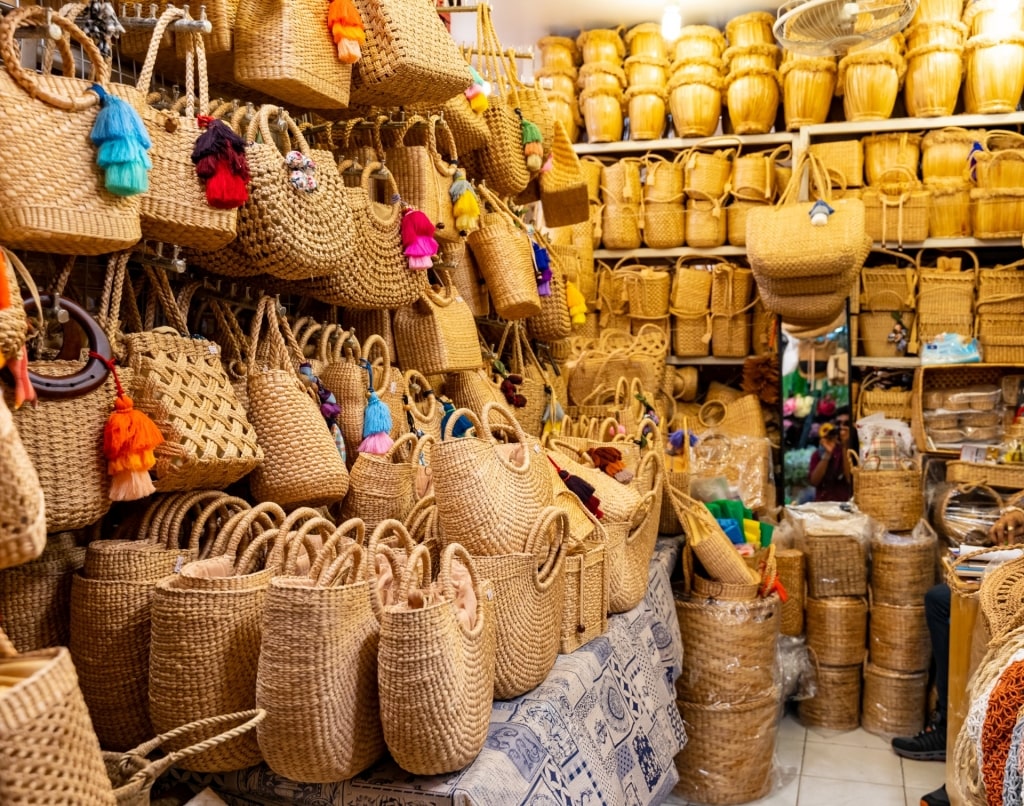
Rattan bags
Thai artisans are known for creating an impressive array of handicrafts, many of which make for perfect souvenirs. Keep an eye out for teak wood carvings, ceramics, and rattan weavings.
Note that while many markets emphasize traditional handicrafts, Bangkok has a thriving design scene and a new generation of Thai makers has been interpreting some of these arts in contemporary ways.
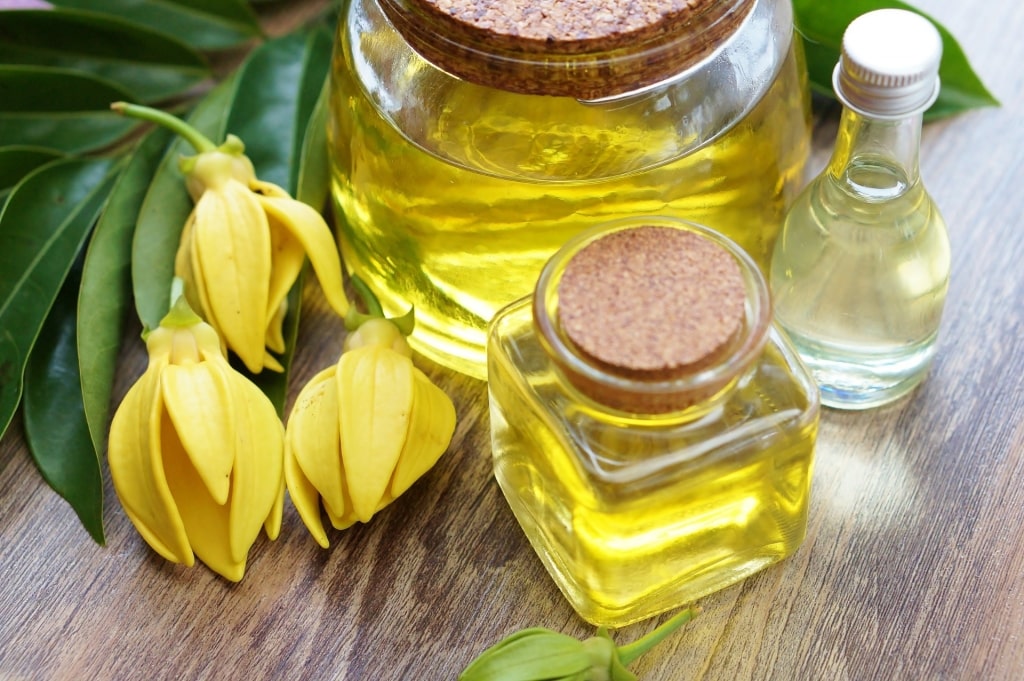
Ylang-ylang oil
Chatuchak is also a great place to pick up wellness products. Thailand is known for its legendary wellness culture—and for good reason. Here, a massage isn’t viewed as an expendable luxury; it’s essential for overall physical and mental health.
To replicate some of the experience at home, look for high-quality massage oils perfumed with ylang-ylang, jasmine, makrut lime, ginger, and other botanicals. To make your home smell like a high-end spa, a number of brands, including the popular Pañpuri and Harnn, offer scent diffusers in a variety of fragrances.
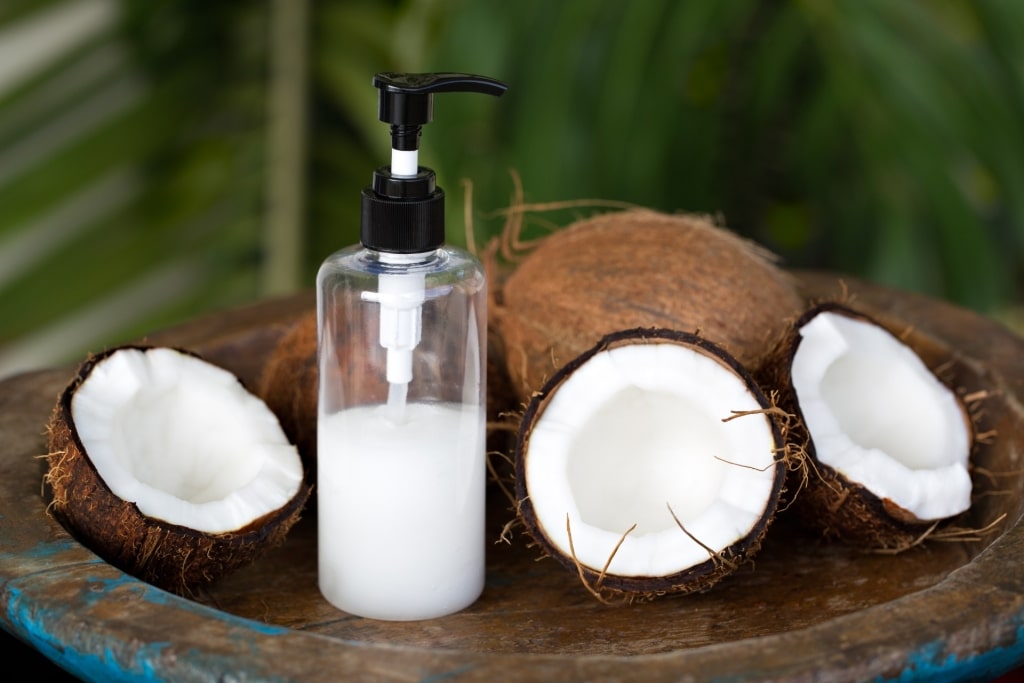
Coconut oil
You’ll also see coconut oil products on sale. Thailand, the world’s third-largest exporter of coconuts, has long made good use of this versatile plant’s many restorative properties. Shop for virgin, cold-pressed coconut oil, as well as lip balms, hair masks, hand and body moisturizers, and more.
To make the most of the experience, go early in the day, when both the heat and the crowds are at their most bearable, and come armed with a plan.
At first glance, the market may appear chaotic, but there are actually carefully ordered sections. Pack a map before setting into the fray and decide on a few key areas you’d like to visit in advance.
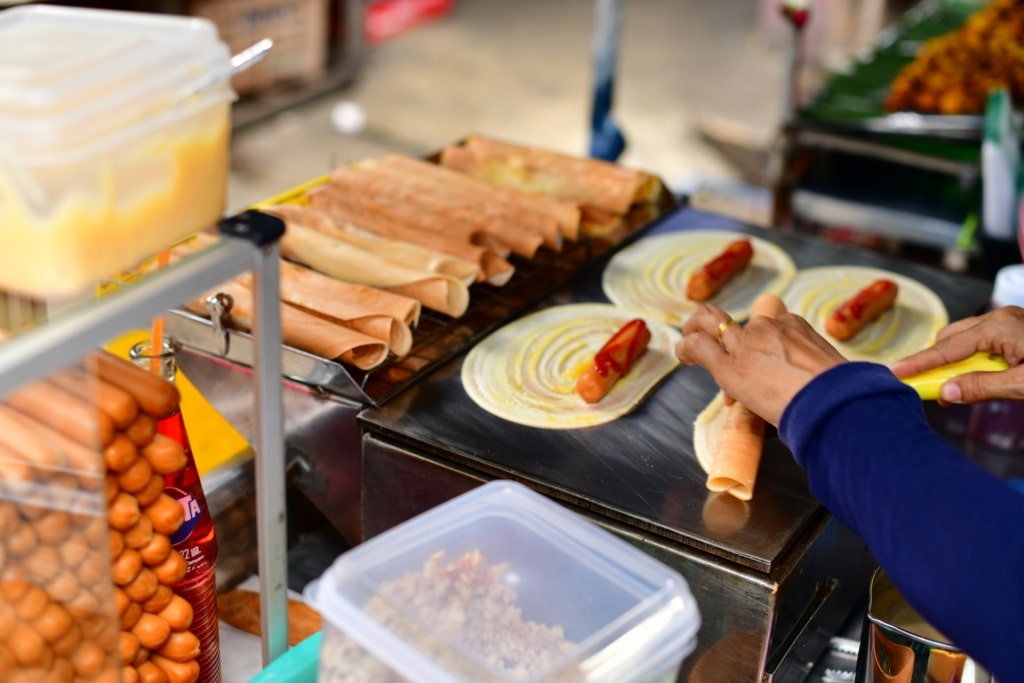
Street food in Chatuchak Weekend Market
When all the shopping starts to wear you down, refreshments are never far away. Order a coffee from DoiTung, a fairtrade enterprise giving hill tribes a sustainable source of income, or street food from any of the myriad vendors. In the early evenings, Viva 8, a lively, low-key bar, serves killer mojitos and often has live DJs.
Pak Khlong Talat (Flower Market)
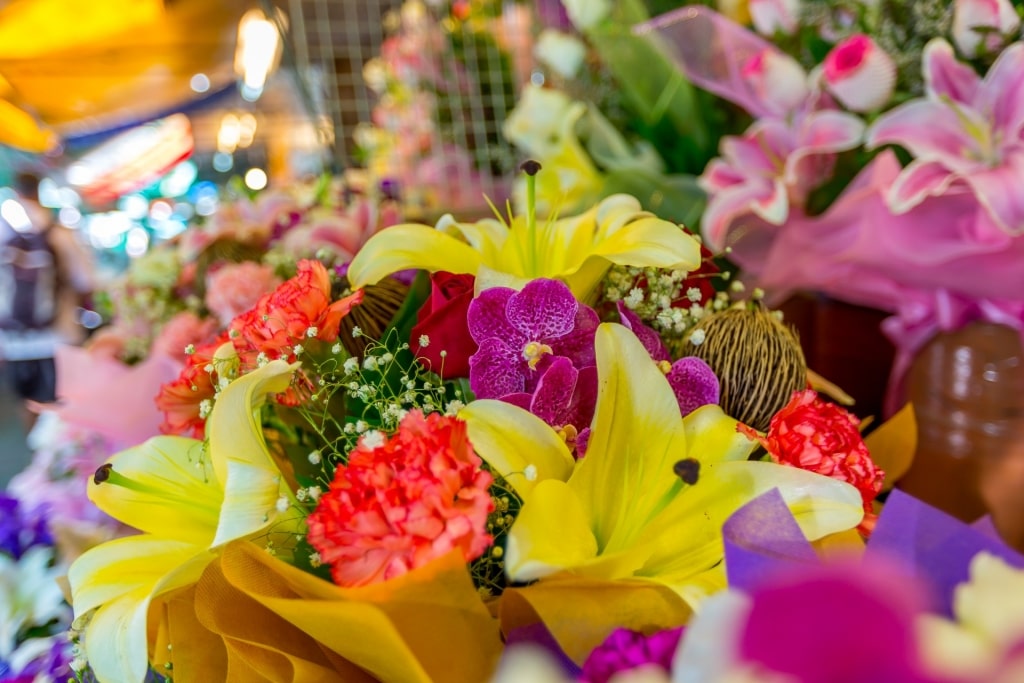
Pak Khlong Talat
Bangkok’s daily wholesale flower market is an institution with a long, proud history. Pak Khlong Talat most likely started as a floating market in the 18th century. For generations, it remained a place for locals to pick up gorgeous fresh garlands of flowers, both to offer up at temples and carry for luck.
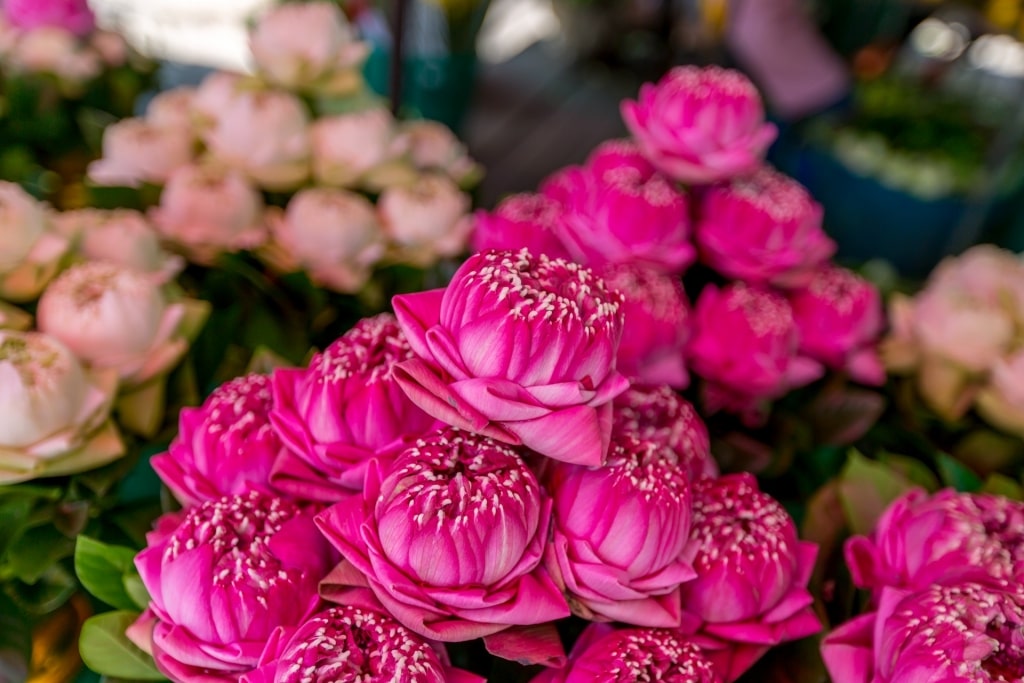
Pak Khlong Talat
Although the original flower market greatly decreased in size in 2016, as part of a city clean-up, it’s still worth a visit if only to admire the beautiful displays of orchids.
Amulet Market
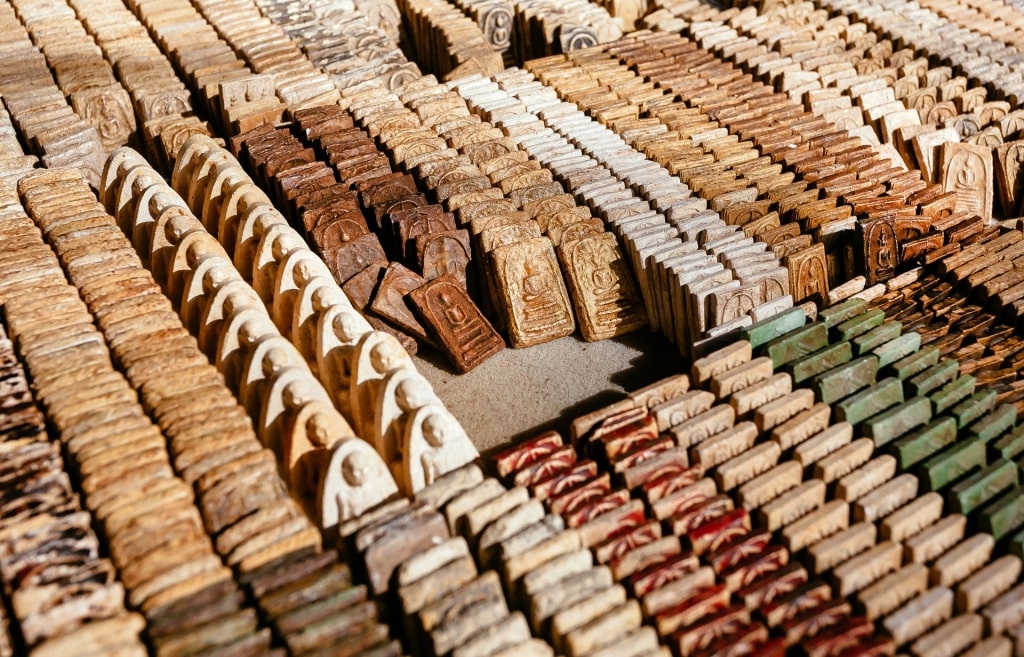
Amulet Market
Located near the Grand Palace and Wat Phra Kaew, the Temple of the Emerald Buddha, this sprawling amulet market is a popular stop on most sightseeing tours. Expect to see scores of glittering golden Buddha statues and figurines, along with charms to ward off all sorts of evil.
If you want to buy antiques and amulets, it’s important to know what to look for before purchasing. If something seems like a bargain, it’s probably too good to be true and may not be authentic.
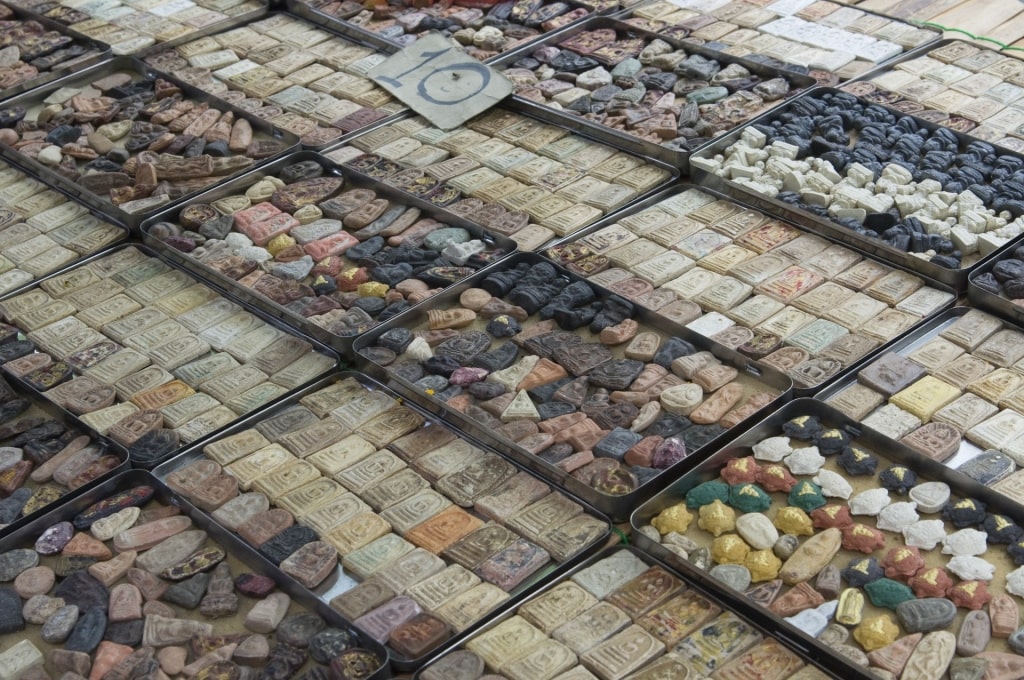
Amulet Market
Also, while Buddha trinkets and statues abound, some Thais consider purchasing these and removing them from the country to be offensive to their faith. If you’re planning on purchasing antiques, be sure to ask where they come from and buy from places with transparent, ethical sourcing.
Pahurat Textile Market
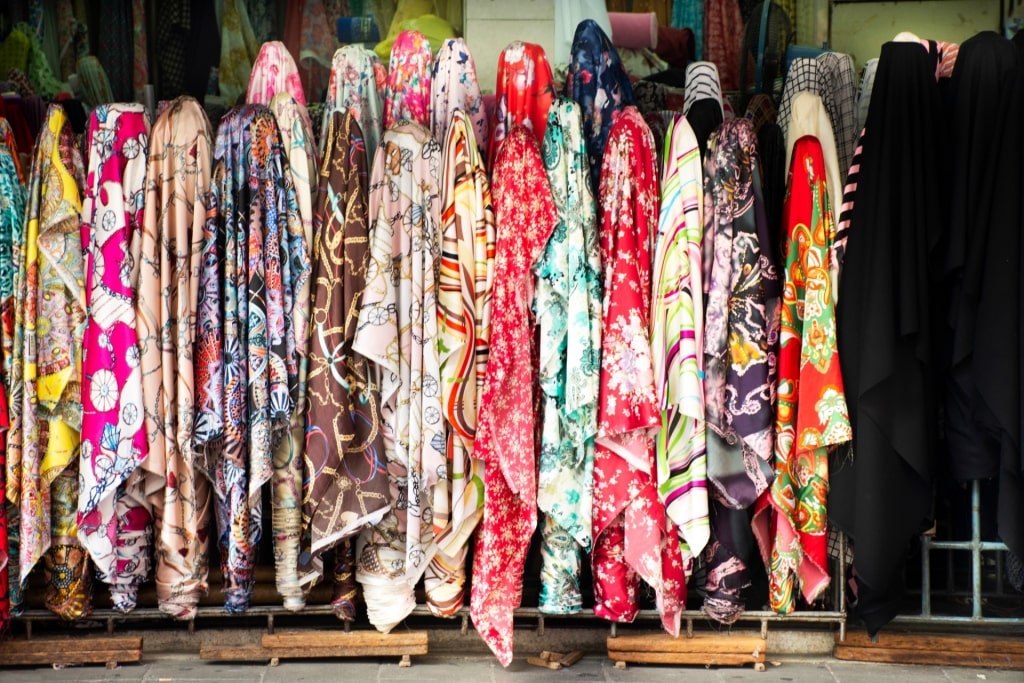
Pahurat Textile Market
This colorful market resides in the heart of Bangkok’s Little India, a short stroll from Chinatown. While the neighborhood, which encompasses the streets surrounding the Sri Guru Singh Sabha Temple, is small, it’s an important place for the city’s large Indian diaspora community.
On your way to the textile market, keep an eye out for the neighborhood’s beloved samosa vendor and stock up on syrupy jalebi from one of the sweet shops.
The market itself consists of both India Emporium, a four-story mall, and the labyrinth-like collection of alleys surrounding it. It’s the perfect place to stock up on both Thai and Indian silks, as well as other beautifully woven textiles. Savvy shoppers can pick up fabrics of exceptionally high quality here, often for a fraction of what they might cost elsewhere.
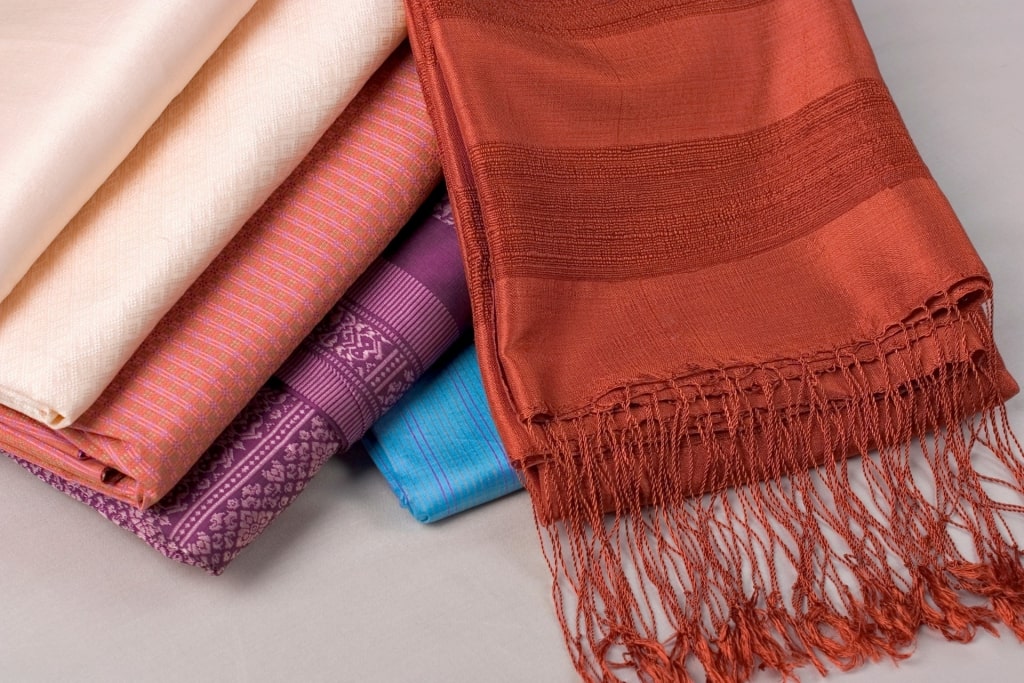
Thai silk
According to archeological findings in Ban Chiang, Thailand’s tradition of silk weaving is at least 3,000 years old. Today, Thai silks are some of the finest in the world and remain prized for their exquisite patterns, fine weave, and ability to retain their vibrant colors over time.
As with any handicraft here, expect to find a considerable range in terms of both quality and price. While there are some bargains to be found, when it comes to silks, it’s usually worth spending the extra baht here for truly exceptional scarves and dresses that will still shimmer for decades.
Khao San Road (Night Market)
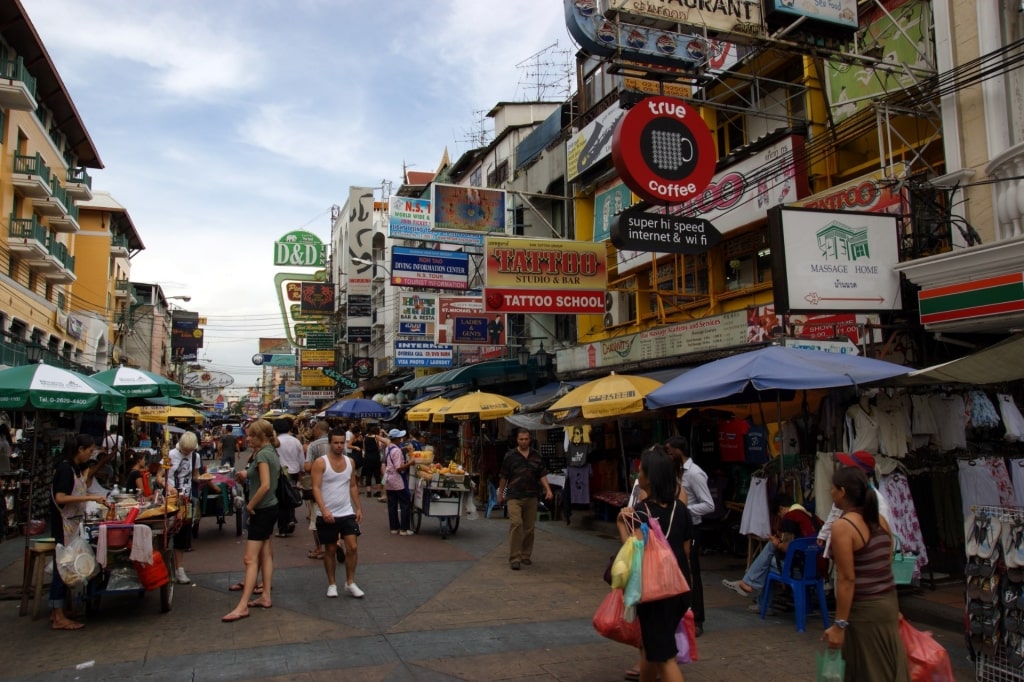
Khao San Road Photo by Allie_Caulfield on Flickr, licensed under CC BY 2.0
It might be hard to believe, looking at its present incarnation, but Thanon Khao San, or Khao San Road, was once home to Bangkok’s largest rice market. Throughout the 1960s and 70s, it became something of a hub for hippies traveling through Southeast Asia.
By the 1980s, a thriving network of guesthouses had sprung up and the area had morphed into backpacker central.
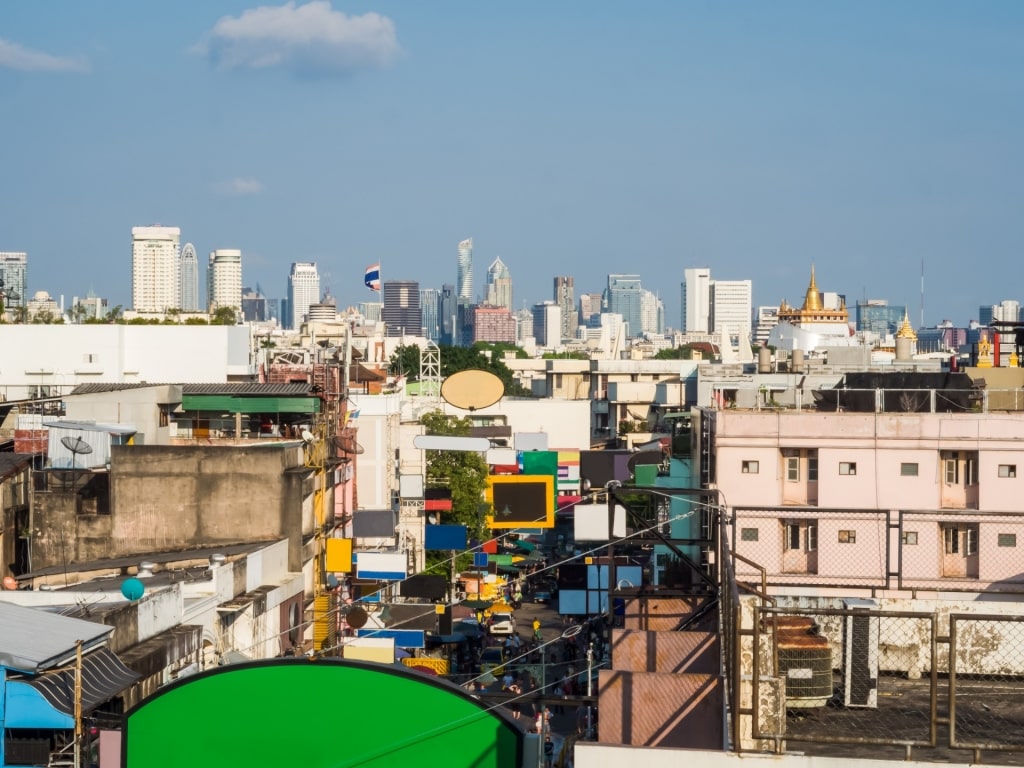
Khao San Road
Locals in Bangkok have long had somewhat mixed feelings about Khao San Road, which caters almost exclusively to travelers and remains separate from the rest of the city. Yet the area has become something of an institution in and of itself and it’s worth strolling through at least once, as a rite of passage when you visit Bangkok.
Every evening, the street turns into something of a human carnival, with as many as 50,000 people passing through in a day to drink, hang out, and shop for clothing, shoes, and jewelry.
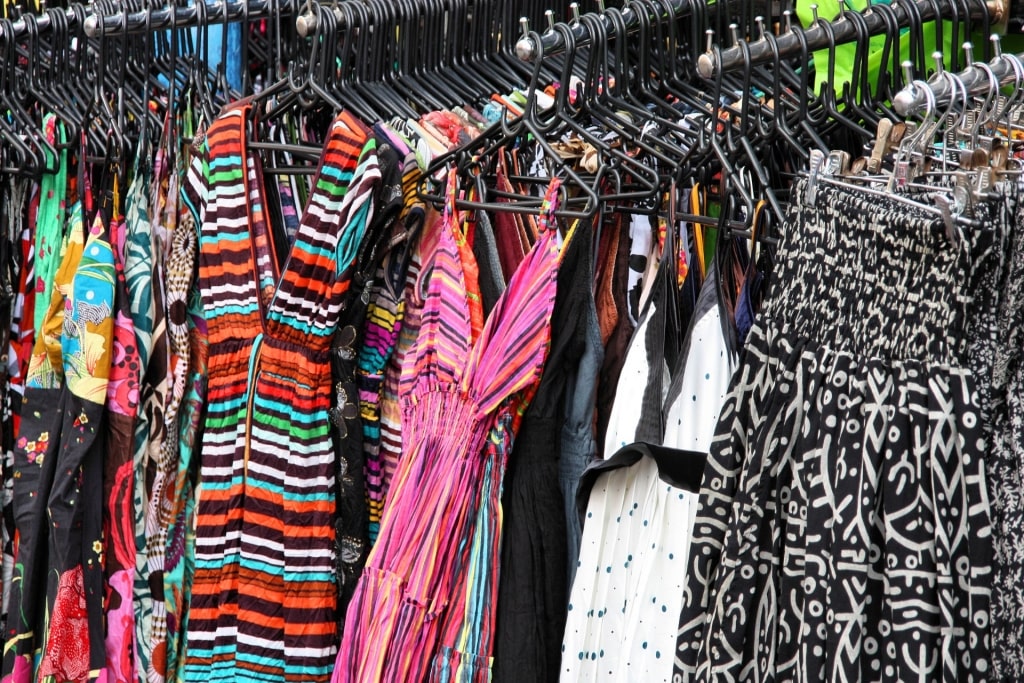
Khao San Road
You’ll find more tasteful souvenirs here, too, among the inevitable T-shirts and harem pants with elephant prints. In the streets off the main road, look for vintage clothing, silver jewelry, handicrafts made by the hill tribes of northern Thailand, and fabrics.
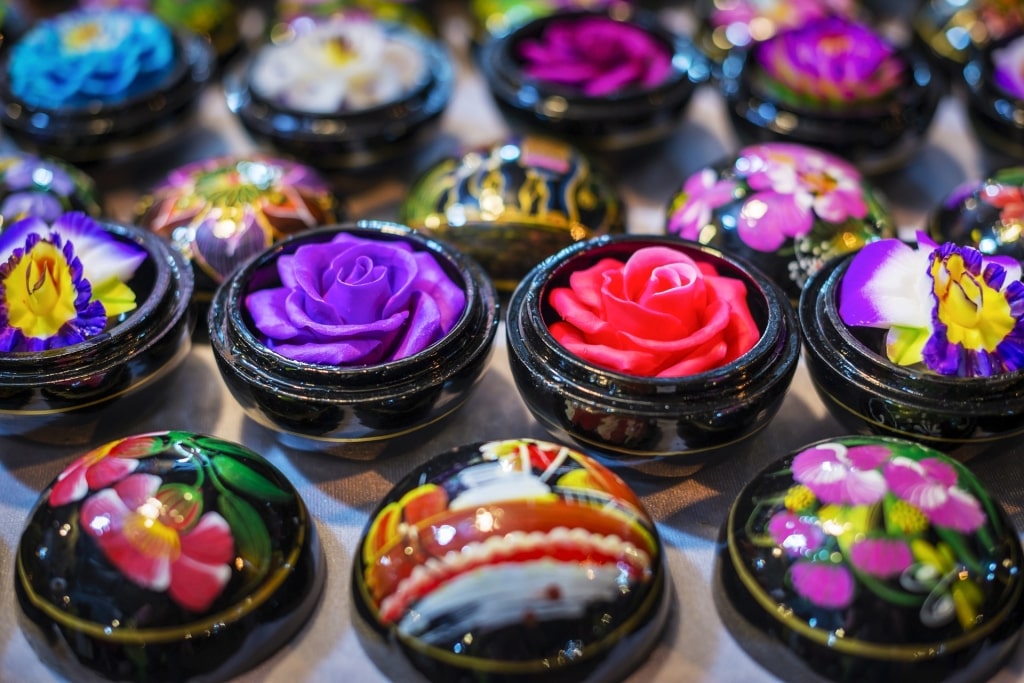
Flower soap
A cute gift to take home is hand-carved flower soap. You’ll see carved fruits and vegetables in the markets, as a display, and these much smaller, perfumed soaps are a great reminder of your time in Thailand, in the shape of lotus flowers, or water lilies.
Be sure to check out the nightlife after you’ve had enough of shopping. Curiously, while this famous night market in Bangkok long had a reputation as a backpacker venue, in recent years, it’s gained a certain level of popularity with young, hip Thais.
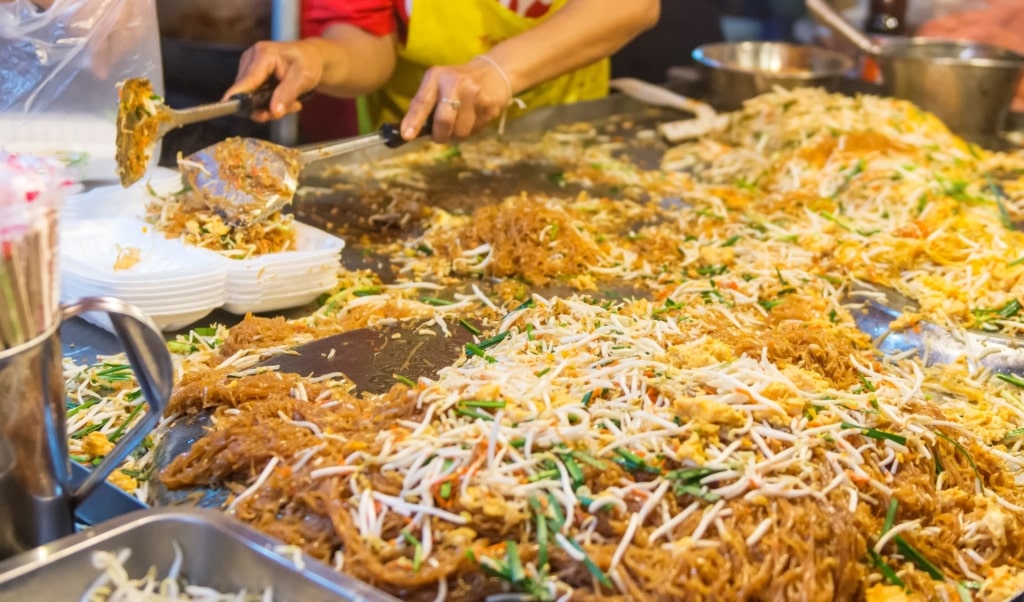
Pad thai
Stop for street food, although bear in mind that it dials down the chilies and the complexity here in an effort to appease Western palates.
Stay for the people-watching, too. The best way to enjoy Khao San is to sidle up to one of the bars playing reggae music, order a Singha beer, and take in the vibe.
Old Market, Yaowarat Road
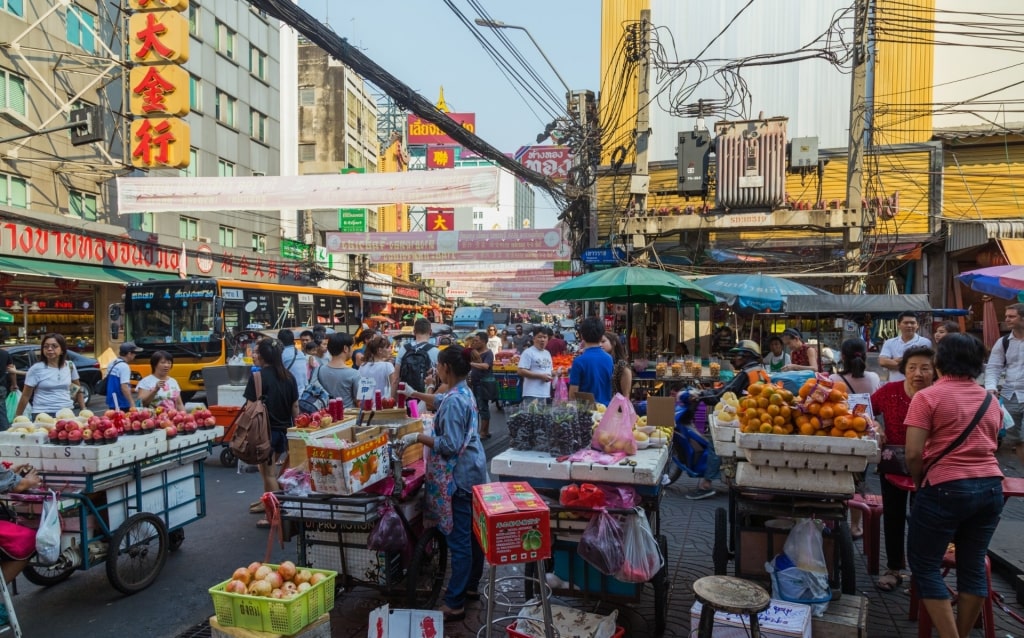
Old Market, Yaowarat Road Photo by Marcin Konsek on Wikimedia Commons, licensed under CC BY-SA 4.0
If you’re looking for some of the best street food in central Bangkok, this Chinatown market is still the place to go. In recent years, the Thai government has been cracking down on Bangkok’s street food vendors, evicting whole districts and shutting down night markets.
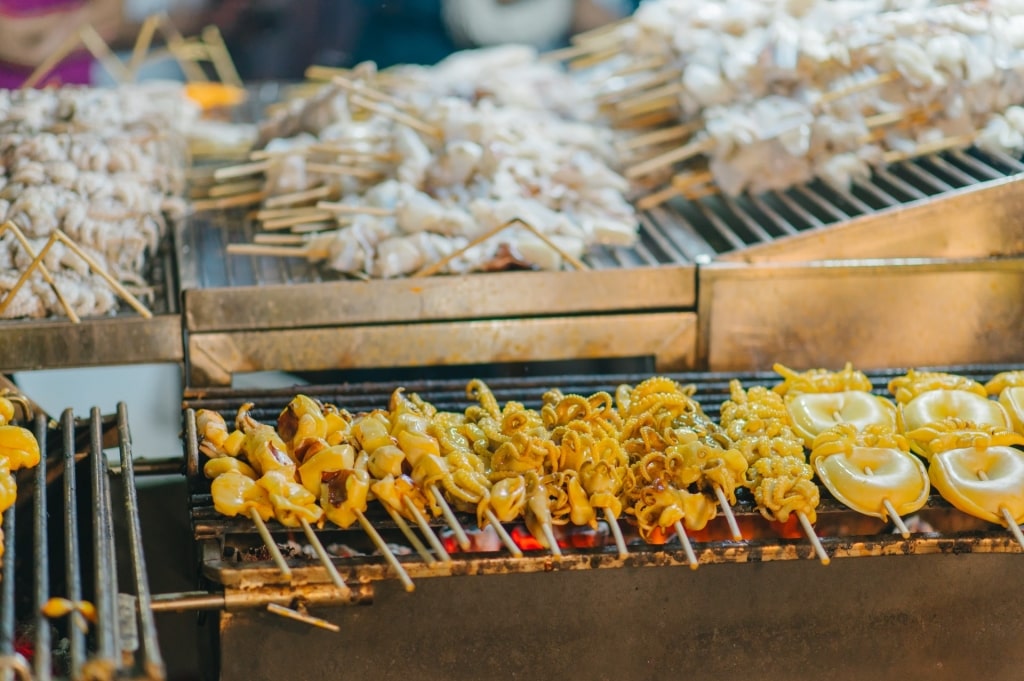
Street food in Yaowarat Road
Thankfully, the vendors on Yaowarat Road, Chinatown’s main street, have survived relatively unscathed, thanks in large part to their popularity with travelers.
With such a dizzying array of options, it can be hard to know where to even start. Many of the hawker stands here have been in the same family for generations.
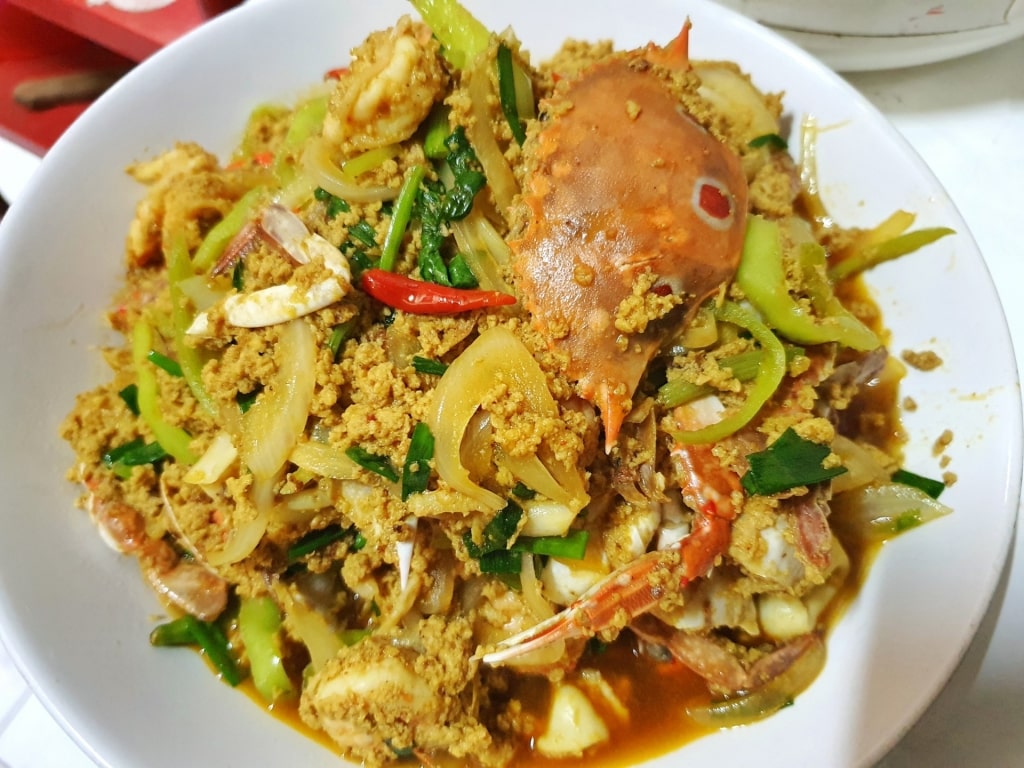
Pu pad pong karee
A few classics include T&K Seafood and R&L Seafood, which are located across the street from one another and known for serving up fat grilled tiger prawns and plates of pu pad pong karee (stir-fried whole crab with yellow curry sauce).
Guay Jub Oun Pochana has been serving up the same savory noodles for 50 years, while Pa Jin Cockle Soi Texas, located on a sidestreet, is famous for heaping platters of mussels and cockles.
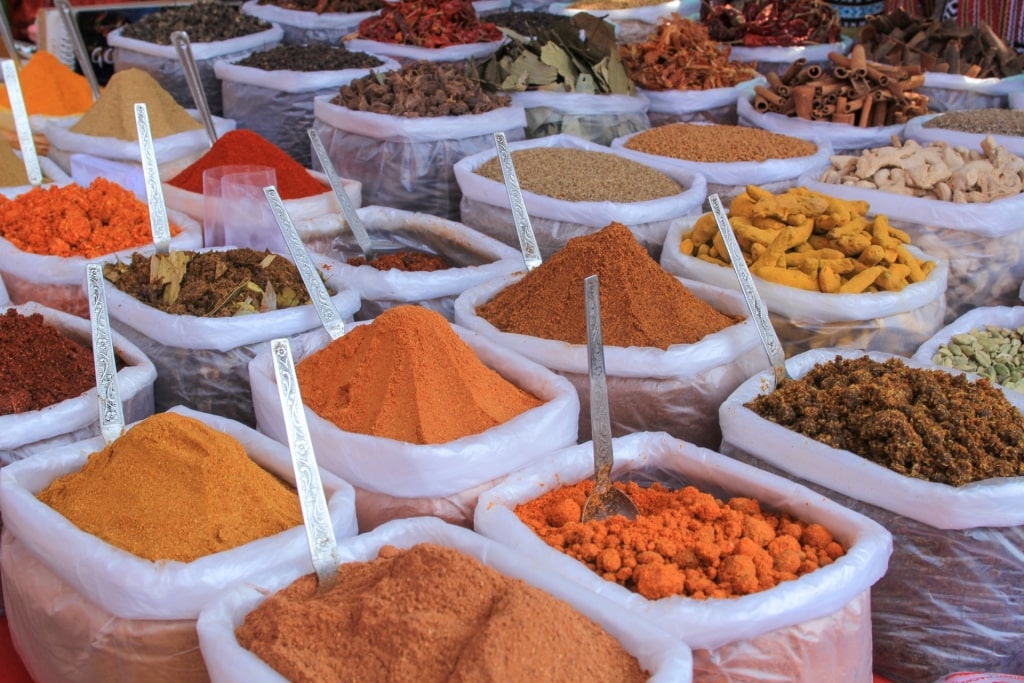
Thai spices
As well as popular Thai dishes, you’ll find all manner of stalls here selling spices and condiments to take home. Stock up on beautifully balanced curry pastes, fish sauces, and dried bird’s eye chilies.
Closer to the Burmese border in Northern Thailand, the cuisine leans more heavily on dried spices including turmeric, cumin, coriander, and chilies, all of which can be found in curry mixes in the south, as well.
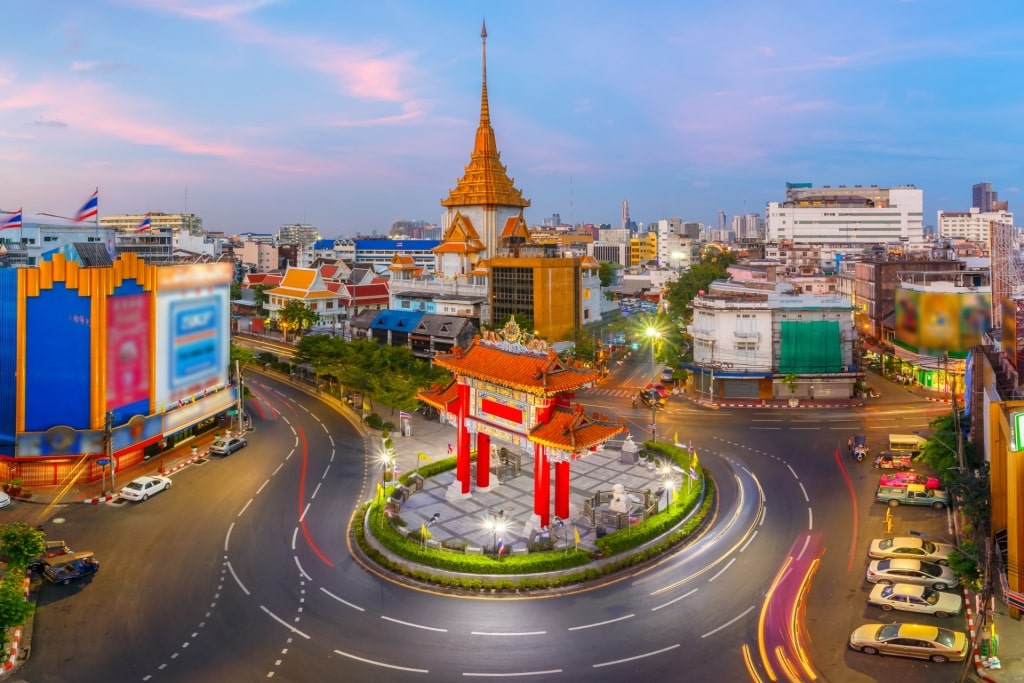
Yaowarat Road
Chinatown may be one of Bangkok’s historic enclaves, but these days, it’s also one of its hippest. Over the last decade, the alleys surrounding Yaowarat Road have become home to a host of trendy bars including Teens of Thailand, which specializes in gin, and Tep Bar, which serves house-infused shots of yadong, a type of traditional Thai moonshine.
Damnoen Saduak Floating Market
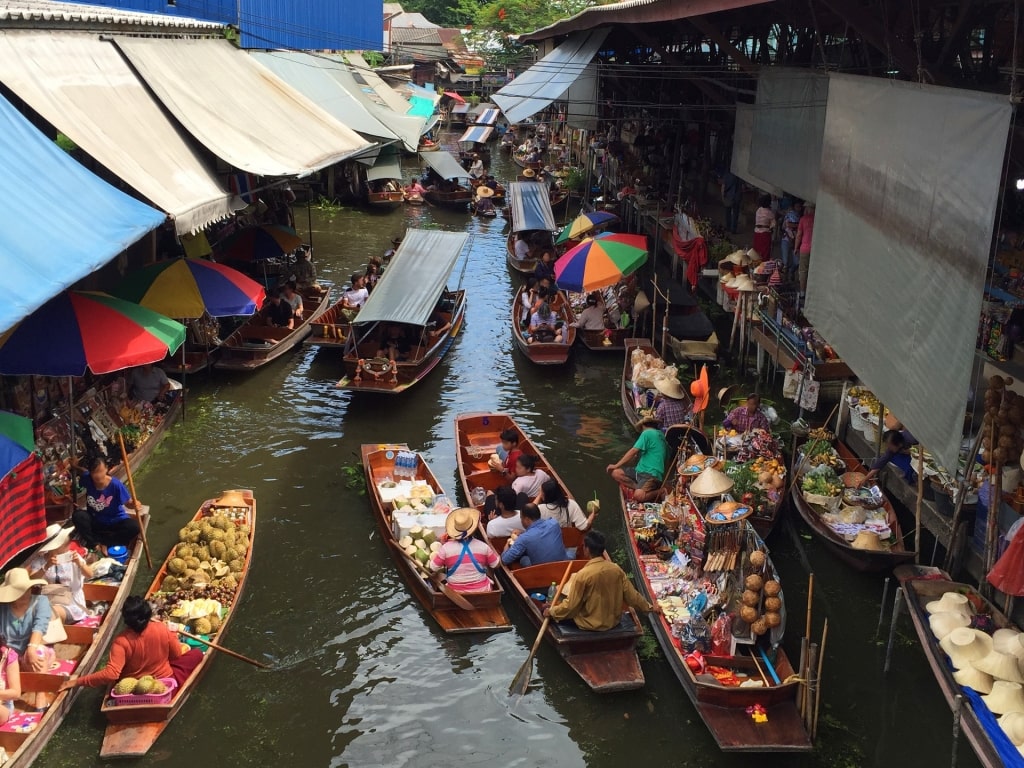
Damnoen Saduak Floating Market
Bangkok is a city of water, built around rivers and an intricate network of canals, known as klongs. Life here is still deeply tethered to the local waterways, which were once home to numerous floating markets.
Damnoen Saduak Floating Market, about an hour from the city by road, offers a glimpse of the region’s past and is a terrific day trip if you have at least two days in Bangkok. The main draw here is the excellent street food, served by hawkers in traditional longtail boats.
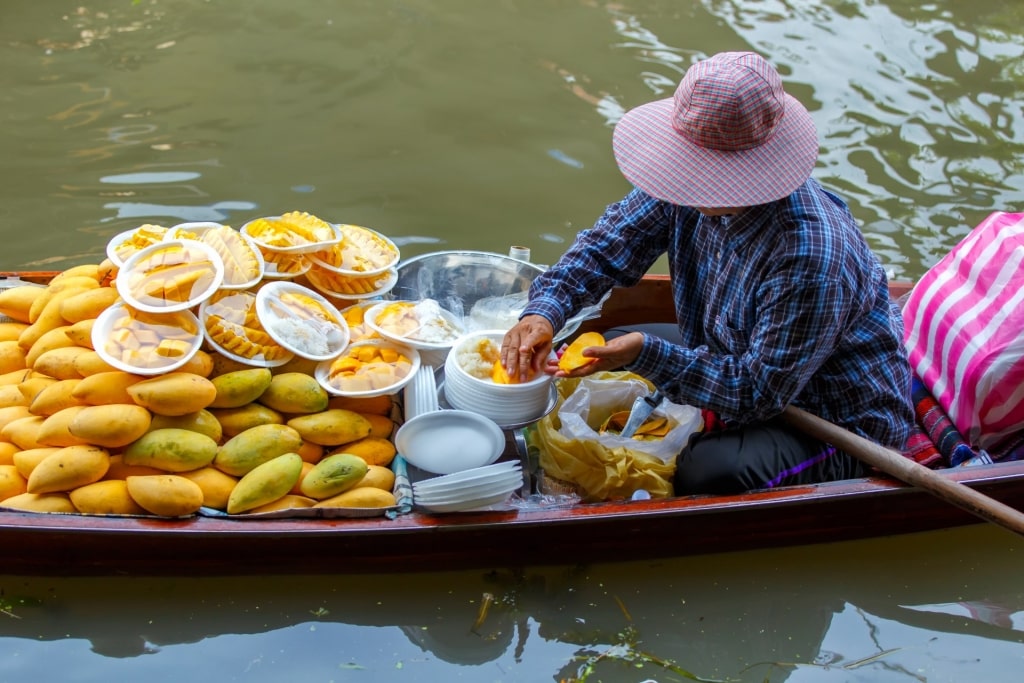
Damnoen Saduak Floating Market
All the classics, from mango sticky rice and pad Thai, are here. Keep an eye out for fiery, sour, and sweet tom yum noodles, served either with or without soup, as well as kway tiew reua, bowls of rice noodles and offal in a richly spiced pork broth. The latter are named “boat noodles,” since they’ve been served in markets just like this one for hundreds of years.
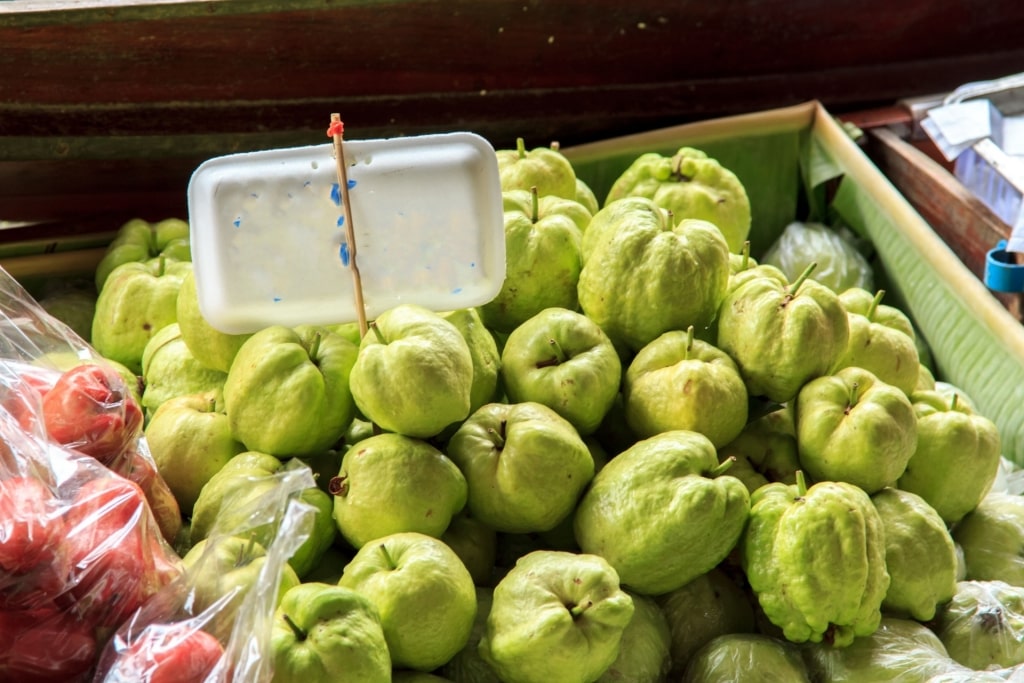
Guavas
Thailand boasts an unbelievable array of fruits, many of which street or boat vendors will happily carve up for you on the spot. Order guavas—called “farang,” which is also slang for a foreigner— with chili-spiked sugar and salt.
Especially during mango season each March through July, you’ll want to be sure to order these luscious fruits with warm sticky rice and coconut-palm sugar sauce. Seek out sweet-fleshed mangosteens wherever you can, as well as rambutans, custard apples, and dragon fruits.
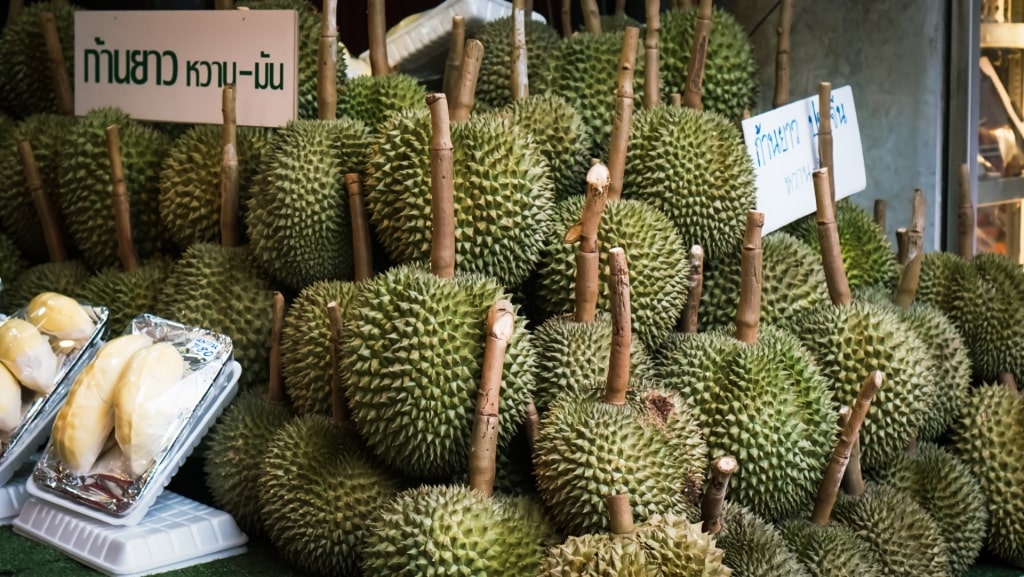
Durian
Finally, while durian’s notoriously pungent aroma may be off-putting at first to the unacquainted, the “king of fruits” is very much worth seeking out. Thailand’s durian season goes from March to December, making it one of the longest in the region, and these massive, spiked fruits are highly prized.
Try it in the same preparation as mango sticky rice, or order durian ice cream or durian cake, both of which are much less ferocious than the fresh fruit.
Read: Best Places to Visit in Southeast Asia
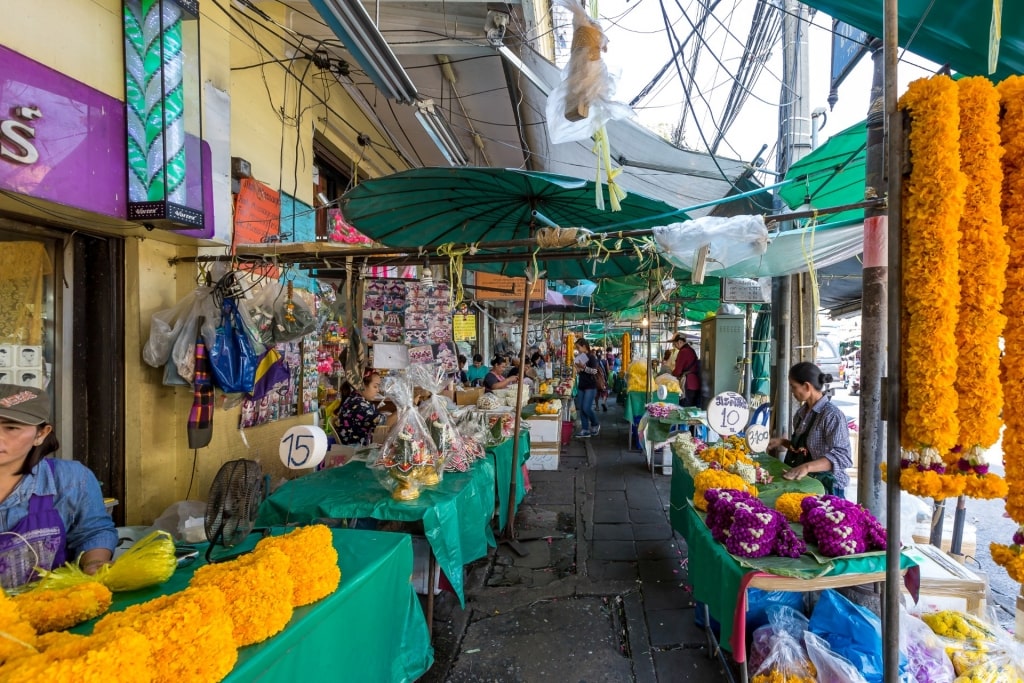
Market in Bangkok
Shoppers will find the markets in Bangkok nothing short of thrilling. To discover all that this compelling Southeast Asian capital has to offer, browse our cruises to Bangkok and book your next getaway today.


